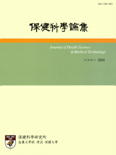- 영문명
- The Recognition of Medical Providers and Users on Telemedicine
- 발행기관
- 고려대학교 보건과학연구소
- 저자명
- 이현실(HyunSill Rhee) 최만규(ManKyu Choi) 김광환(KwangHwan Kim)
- 간행물 정보
- 『보건과학논집』保健科學論集 Vol.30 No.2, 59~66쪽, 전체 8쪽
- 주제분류
- 의약학 > 의학일반
- 파일형태
- 발행일자
- 2004.12.01

국문 초록
영문 초록
Recently telemedicine, using information and communication technologies, continues to increase. Telemedicine includes all activities that deliver longdistance medical services and information by taking advantage of an interactive information and communication technology.
This study was conducted to investigate current telemedicine practice and the differences of opinions on telemedicine among medical providers and users. For the purpose of this study, a self-administered questionnaire was conducted with 250 medical employees, 50 public officials, and 200 residents in Seoul from July 15-24, 2004. The data for the empirical study were obtained by questionnaire using a 5-point Likert-type scale. The study sample consisted of 496(99.2% of the recipients) subjects who faithfully responded to the questionnaire. The major statistical methods included frequency and mean.
The major results of this study were as follows.
First, a preference for telemedicine, upon investigation, resulted in scores of 3.6 points for inhabitants, 3.6 points for public officials, and 3.5 points for medical employees respectively. All three groups showed similar preference. Second, the results of investigating applicable diseases by telemedicine for medical employees, inhabitants, and public officials were respectively as follows: diabetes(27.1%), diet(19.2%), cancer(15.7%); high blood pressure (31.4%), diabetes(27.2%), diet(16.7%); and diabetes(27.9%), high blood pressure (24.6%), diet(20.3%).
Third, factors to be considered for the effective practice of telemedicine were considered by medical employees, inhabitants, and public officials respectively to be as follows: correct diagnosis(32.8%), medical insurance fees(21.5%), equipment and facilities(16.0%); correct diagnosis(43.1%), medical insurance fees(23.8%), patient"s education(20.7%); and correct diagnosis (35.5%), telemedicine place(22.1%), medical insurance fees(13.9%). Overall, subjects in this study thought that a correct diagnosis should be considered the most important factor in the effective practice of telemedicine.
Fourth, subjects in this study considered that the home to be the most suitable place for telemedicine(medical employees 39.6%, inhabitants 31.9%, public officials 39.2%).
Fifth, all subjects considered a price of 3,000 to 5,000 won per use to be reasonable (medical employees 52.7%, inhabitants 51.0%, public officials 48.9%). Also, subjects thought public offices(66.5%, 70.1%, 68.1%), public health centers(30.6%, 29.4%, 23.4%), and hospitals(2.1%, 0.5%, 8.5%) to be appropriate institutions for administering telemedicine.
In conclusion, medical providers and customers all recognized the importance of telemedicine practice. Therefore, the successful introduction of telemedicine in Korea requires both an analysis of operating cases in developed countries and consideration of the unique medical characteristics and circumstances of Korea. To introduce efficient telemedicine practice, sufficient studies and practice through demonstration projects must be carried out. Also, the government and related institutions must support the development of appropriate and convenient medical equipment and must also institute appropriate legal systems such as a schedule of reasonable medical fees as well as improving the accessibility of medical services for users.
This study was conducted to investigate current telemedicine practice and the differences of opinions on telemedicine among medical providers and users. For the purpose of this study, a self-administered questionnaire was conducted with 250 medical employees, 50 public officials, and 200 residents in Seoul from July 15-24, 2004. The data for the empirical study were obtained by questionnaire using a 5-point Likert-type scale. The study sample consisted of 496(99.2% of the recipients) subjects who faithfully responded to the questionnaire. The major statistical methods included frequency and mean.
The major results of this study were as follows.
First, a preference for telemedicine, upon investigation, resulted in scores of 3.6 points for inhabitants, 3.6 points for public officials, and 3.5 points for medical employees respectively. All three groups showed similar preference. Second, the results of investigating applicable diseases by telemedicine for medical employees, inhabitants, and public officials were respectively as follows: diabetes(27.1%), diet(19.2%), cancer(15.7%); high blood pressure (31.4%), diabetes(27.2%), diet(16.7%); and diabetes(27.9%), high blood pressure (24.6%), diet(20.3%).
Third, factors to be considered for the effective practice of telemedicine were considered by medical employees, inhabitants, and public officials respectively to be as follows: correct diagnosis(32.8%), medical insurance fees(21.5%), equipment and facilities(16.0%); correct diagnosis(43.1%), medical insurance fees(23.8%), patient"s education(20.7%); and correct diagnosis (35.5%), telemedicine place(22.1%), medical insurance fees(13.9%). Overall, subjects in this study thought that a correct diagnosis should be considered the most important factor in the effective practice of telemedicine.
Fourth, subjects in this study considered that the home to be the most suitable place for telemedicine(medical employees 39.6%, inhabitants 31.9%, public officials 39.2%).
Fifth, all subjects considered a price of 3,000 to 5,000 won per use to be reasonable (medical employees 52.7%, inhabitants 51.0%, public officials 48.9%). Also, subjects thought public offices(66.5%, 70.1%, 68.1%), public health centers(30.6%, 29.4%, 23.4%), and hospitals(2.1%, 0.5%, 8.5%) to be appropriate institutions for administering telemedicine.
In conclusion, medical providers and customers all recognized the importance of telemedicine practice. Therefore, the successful introduction of telemedicine in Korea requires both an analysis of operating cases in developed countries and consideration of the unique medical characteristics and circumstances of Korea. To introduce efficient telemedicine practice, sufficient studies and practice through demonstration projects must be carried out. Also, the government and related institutions must support the development of appropriate and convenient medical equipment and must also institute appropriate legal systems such as a schedule of reasonable medical fees as well as improving the accessibility of medical services for users.
목차
Abstract
Ⅰ. 서론
Ⅱ. 연구방법
Ⅲ. 조사결과
Ⅳ. 고찰 및 결론
참고문헌
Ⅰ. 서론
Ⅱ. 연구방법
Ⅲ. 조사결과
Ⅳ. 고찰 및 결론
참고문헌
해당간행물 수록 논문
참고문헌
최근 이용한 논문
교보eBook 첫 방문을 환영 합니다!

신규가입 혜택 지급이 완료 되었습니다.
바로 사용 가능한 교보e캐시 1,000원 (유효기간 7일)
지금 바로 교보eBook의 다양한 콘텐츠를 이용해 보세요!



